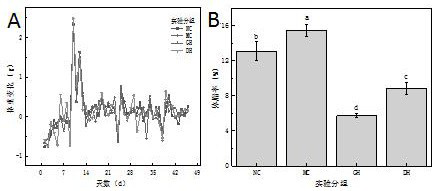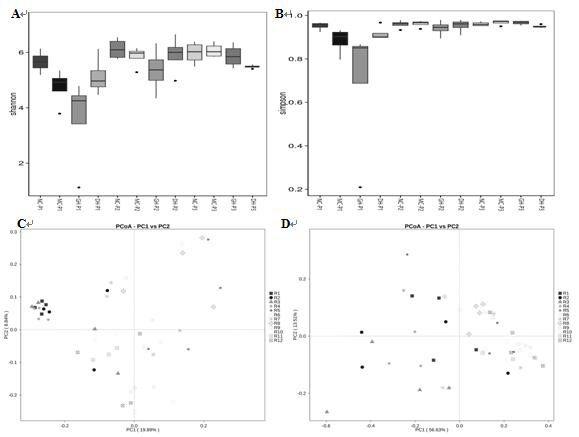Feed additive and preparation method thereof
A technology for feed additives and raw materials, applied in the field of feed additives and their preparation, can solve the problems of low protein utilization rate, resource waste, environmental pollution, etc., and achieve the effects of low preparation cost, increased spleen index, and simple and easy preparation method.
- Summary
- Abstract
- Description
- Claims
- Application Information
AI Technical Summary
Problems solved by technology
Method used
Image
Examples
Embodiment 1
[0026] Example 1 Preparation of Feed Additives
[0027] (1) Mix 15 kg of shrimp by-products (shrimp head of Penaeus vannamei, 16-20 meshes), 8 kg of bran (wheat bran), add 23 kg of water, and use it as a solid-state fermentation substrate for later use;
[0028] (2) After the solid-state fermentation substrate was sterilized (sterilized at 115°C for 30 min), 4 kg (1×10 9 CFU / g), mixed evenly, and fermented at room temperature for 50 h to obtain fermented product (high water content);
[0029] Described Bacillus cereus is Bacillus cereus OKF01 ( Bacillus cereus OKF01), screened and preserved in the laboratory of the inventor of the present invention, screened from the deep sea mud of the East China Sea and can grow with Antarctic krill meal as the only carbon and nitrogen source, recorded in the following open documents: Jianan Sun, et al., Screening of Microorganisms from deep-sea mud for Antarctic krill ( Euphausia superba ) fermentation and evaluation of the bioactive ...
Embodiment 2
[0031] Example 2 Preparation of Feed Additives
[0032] (1) Mix 10 kg of shrimp shell powder (shrimp shell of Penaeus vannamei, below 8 mesh), 12 kg of bran (wheat bran), add 22 kg of water, and use it as a solid-state fermentation substrate for later use;
[0033] (2) After the solid-state fermentation substrate was sterilized (sterilized at 115 °C for 30 min), 3 kg (1×10 9 CFU / g), mixed evenly, and fermented at room temperature for 60 h to obtain fermented product (high water content);
[0034] (3) Add 2 kg of starch to the above fermented product, mix well, and dry (blast drying, drying temperature 50 °C, drying time 10 h) to obtain the feed additive.
Embodiment 3
[0035] Example 3 Preparation of Feed Additives
[0036] (1) Mix 12 kg of shrimp by-products (a mixture of shrimp heads and shells of Penaeus vannamei, 12-16 meshes), 10 kg of bran (wheat bran), and add 25 kg of water as a solid-state fermentation substrate ,spare;
[0037] (2) After the solid-state fermentation substrate was sterilized (sterilized at 115 °C for 30 min), 3 kg (1×10 9 CFU / g), mixed evenly, and fermented at room temperature for 55 h to obtain fermented product (high water content);
[0038] (3) Add 2 kg of starch to the above-mentioned fermented product, mix well, and dry (blast drying, drying temperature 55 ℃, drying time 12 h) to obtain the feed additive.
[0039] The content of crude protein and amino acid nitrogen after fermentation was determined by Kjeldahl method and formaldehyde titration. The results: the nitrogen content of crude protein after fermentation was 54.4 mg / g·N, and the amino acid nitrogen was 7.35 mg / g·N.
PUM
 Login to View More
Login to View More Abstract
Description
Claims
Application Information
 Login to View More
Login to View More - R&D
- Intellectual Property
- Life Sciences
- Materials
- Tech Scout
- Unparalleled Data Quality
- Higher Quality Content
- 60% Fewer Hallucinations
Browse by: Latest US Patents, China's latest patents, Technical Efficacy Thesaurus, Application Domain, Technology Topic, Popular Technical Reports.
© 2025 PatSnap. All rights reserved.Legal|Privacy policy|Modern Slavery Act Transparency Statement|Sitemap|About US| Contact US: help@patsnap.com



